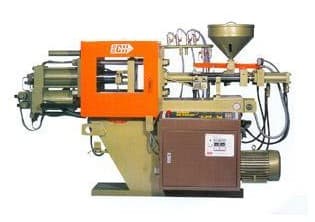The injection molding machine is a special equipment that combines the hot processing characteristics of plastics with the principle of molten die casting of metal. The original plunger-type injection molding machine developed a pre-plasticized screw injection molding machine in the late 1940s. Since then, the focus of development has mainly focused on pre-plasticized screw-type injection molding machines, and advanced forms such as twin-screw and exhaust have emerged.

In 1980, France produced the world's largest screw injection molding machine, with a single injection capacity of 170kg. From the 1980s to recent years, the development of injection molding machines is mainly concentrated in several aspects: fine automation control system and various auxiliary equipment. Application in automated molding; cooperation of precision machinery and high-performance hydraulic systems; development of various special injection molding machines and computer-aided design for the analysis of plastic flow in complex shaped parts to determine the best injection molding conditions; various energy-saving technologies in injection molding Onboard application.
First, the working principle of the injection molding machine
The injection molding machine is referred to as an injection molding machine.
Injection molding uses the thermophysical properties of plastics to feed materials from the hopper into the barrel. The outside of the barrel is heated by the heating coil to melt the material. The barrel is equipped with a screw driven by an external power motor to rotate the material. Under the dual action, it gradually plasticizes, melts and homogenizes. When the screw rotates, the material pushes the molten material to the screw head under the action of the friction and shearing force of the groove. At the same time, the screw is in the material. Reversing under the reaction, the screw head forms a storage space, and the plasticizing process is completed. Then, under the action of the injection cylinder piston reasoning, the screw injects the molten material in the storage chamber through the nozzle into the cavity of the mold under high speed and high pressure. After the molten material in the cavity is pressed, cooled, solidified and shaped, the mold is opened by the mold under the action of the clamping mechanism, and the shaped product is ejected from the mold by the ejection device.
Second, the composition of the injection molding machine will be analyzed
According to the requirements of injection molding process, the injection molding machine is a mechanically integrated machine. It is mainly composed of injection parts, mold clamping parts, airframe, hydraulic system, heating system, control system and feeding device.
At present, common ear injection molding devices are available in single cylinder type and double cylinder type.
Plasticized parts are available in both plunger and screw versions. During the continuous pushing process of the rotating screw, the plastic realizes a change in the physical state, and finally is melted and injected into the cavity. Therefore, the plasticized part is the core component for complete uniform plasticization and quantitative injection.
Multifunctional Hammer Mill
The multifunctional hammer mill is widely used in crushing various biomass wood waste and straw material. The motor and the hammers are directly connected by the coupling. There is no dead angle during the crushing so the finished product is very fine. The corners of the hammers are welded with high hardness material like carbon tungsten alloy. The welding layer thickness is around 3mm. The lifetime is 7- 8 times by normal 65Mn overall quenching hammer. The rotor has made the balance test and can work backward. It`s the best choice to prepare milled material for pellet machine.
Hammer Mill Machine,Wood Hammer Mill Machine,Multifunctional Hammer Mill,Multifunctional Hammer Mill
Shandong Kingoro Machinery Co., Ltd , https://www.kingoromachinery.com
